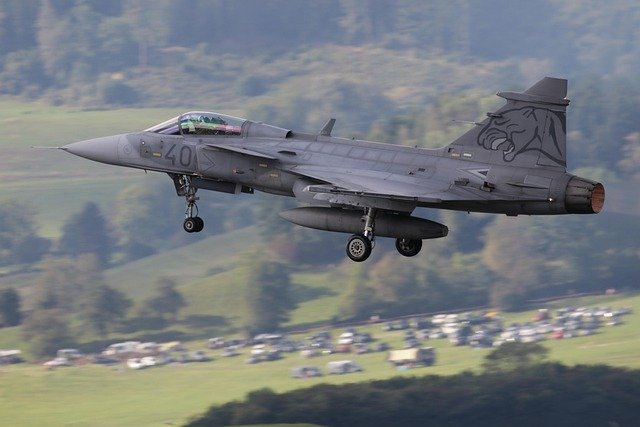The United Kingdom is stepping into a new chapter of its defence strategy with the decision to purchase a dozen F-35A fighter jets capable of carrying tactical nuclear weapons. This move, described by Downing Street as the “biggest strengthening of the UK’s nuclear posture in a generation,” comes at a time of heightened global uncertainty and shifting security dynamics, especially in Europe.
Why Now? The Changing Security Landscape
For over two decades, Britain’s nuclear deterrent has relied exclusively on its fleet of Vanguard-class submarines, armed with Trident missiles. These submarines have provided a continuous at-sea deterrent, but recent geopolitical developments have prompted a rethink. Rising tensions with Russia, concerns about the United States’ evolving role as Europe’s security guarantor, and the proliferation of nuclear and disruptive technologies have all contributed to the urgency for modernisation.
Prime Minister Keir Starmer, announcing the decision at the NATO summit in The Hague, stated, “In an era of radical uncertainty, we can no longer take peace for granted. That is why my government is investing in our national security, ensuring our Armed Forces have the equipment they need”. The move is also aligned with NATO’s call for member states to increase defence spending, with the UK pledging to raise its defence budget to 5% of GDP by 2035.
The F-35A: Bringing Back Air-Based Nuclear Capability
The Royal Air Force (RAF) has not had an aircraft capable of delivering nuclear weapons since the retirement of its Tornado fleet in the late 1990s. Since then, Britain’s nuclear deterrent has been solely submarine-based. The acquisition of the F-35A, built by Lockheed Martin, changes that. Unlike the F-35B model currently operated by the RAF and Royal Navy, which can launch from aircraft carriers but cannot carry nuclear bombs, the F-35A is designed to carry both conventional and nuclear weapons, specifically the US-made B61 tactical nuclear bombs.
The new jets will be stationed at RAF Marham in Norfolk, reintroducing a nuclear role for the RAF for the first time since the end of the Cold War. This not only enhances the UK’s flexibility in responding to threats but also strengthens NATO’s nuclear deterrence posture, as the UK will now contribute dual-capable aircraft to the alliance’s nuclear mission.
How Will It Work? NATO’s Nuclear Sharing
The UK’s participation in NATO’s airborne nuclear mission means that the F-35As will be able to carry American B61 bombs, which are stored in Europe. Seven NATO countries, including Germany and Italy, already operate similar dual-capable aircraft. However, any deployment of nuclear weapons would require approval from both the US President and the UK Prime Minister, as well as NATO’s nuclear planning group.
This arrangement does not mean the UK is developing its own air-launched nuclear missiles. Instead, it is joining a collective European effort to ensure credible deterrence, especially as questions grow about the reliability of US security guarantees in the face of potential future political changes in Washington.
Economic and Industrial Impact
The purchase of the F-35A jets is not just about military capability; it is also a significant boost for the UK’s defence industry. Over 100 UK-based suppliers contribute to the global F-35 programme, supporting around 20,000 jobs across the country. The government has highlighted that 15% of the global supply chain for the jets is based in Britain, delivering a “defence dividend” to communities nationwide.
Moreover, the choice of the F-35A over the F-35B for this procurement package is expected to deliver a saving of up to 25% per aircraft, offering better value for taxpayers. The long-term plan is to procure up to 138 F-35s over the lifetime of the programme, ensuring sustained economic benefits.
Expert Insights and Reactions
NATO Secretary-General Mark Rutte welcomed the UK’s decision, calling it “another strong British contribution to NATO”. Defence analysts note that reintroducing an air-based nuclear capability gives Britain greater flexibility and resilience in its deterrence strategy, especially in light of recent test failures with the Trident submarine system.
However, some experts have raised questions about whether US nuclear weapons would be based on British soil, a move that could prove controversial domestically. The government has so far avoided confirming any such plans, focusing instead on the broader strategic benefits.
What Does This Mean for the UK’s Nuclear Future?
The move to acquire nuclear-capable fighter jets marks a significant evolution in the UK’s approach to deterrence. While the submarine-based Trident system remains the cornerstone of Britain’s nuclear posture, the addition of the F-35A fleet restores a dual-track capability and aligns the UK more closely with its NATO allies.
The government has made it clear that only the Prime Minister can authorise the use of the UK’s nuclear weapons, ensuring operational independence even within the NATO framework. This step is seen as both a response to current security challenges and a signal of the UK’s enduring commitment to collective defence.
The Broader Global Context
The UK’s decision comes amid a broader trend of nuclear modernisation among major powers. The United States, France, and Russia are all investing heavily in new delivery systems and warhead upgrades. By acquiring the F-35A, the UK is ensuring it remains aligned with its closest allies, both technologically and strategically.
There is also a recognition that the credibility of the UK’s deterrent must be maintained in the face of emerging threats, such as advanced missile defences and cyber warfare capabilities. The flexibility offered by air-launched nuclear weapons complements the stealth and survivability of the submarine fleet, creating a more resilient overall deterrent.
Conclusion:
The acquisition of nuclear carrying fighter jets is a landmark decision for British defence policy. It brings the UK back into the fold of nations with both sea and air-based nuclear options, strengthens its role within NATO, and provides a timely economic boost to the domestic defence sector. As the global security landscape grows ever more unpredictable, Britain is making clear its intent to remain at the forefront of European defence and deterrence.
To read more, click here
